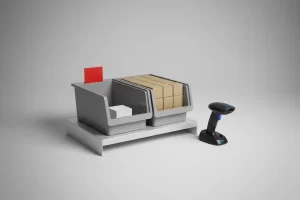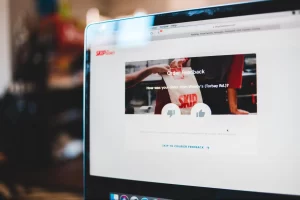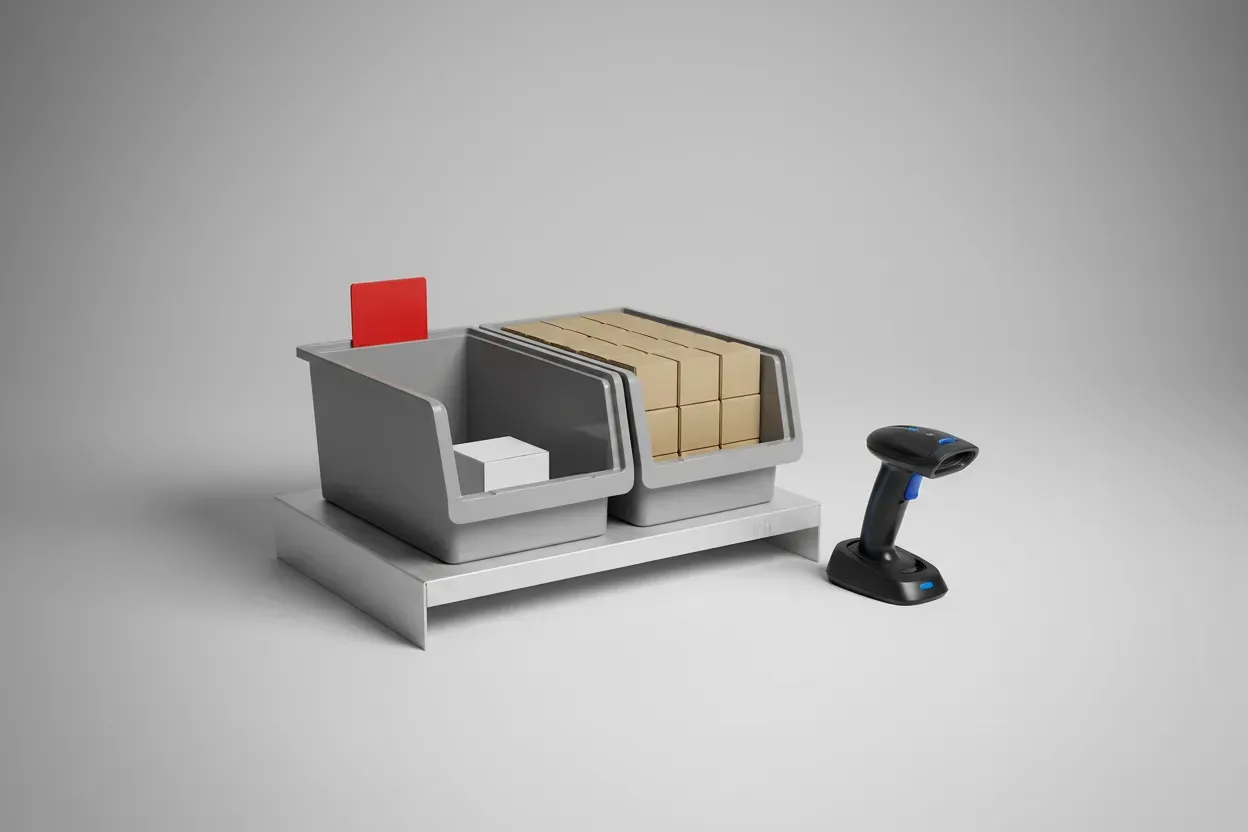12 Strategies to Build a Positive Work Environment from Leaders
Building a positive work environment is crucial for organizational success. This article presents practical strategies gathered from experienced leaders across various industries. By implementing these expert-backed approaches, companies can create a workplace that fosters productivity, engagement, and overall employee satisfaction.
- Operationalize Values for Cultural Transformation
- Redesign Workspace to Boost Morale
- Foster Accountability Through Transparent Communication
- Implement No-Surprise Fridays for Better Planning
- Launch Peer-to-Peer Recognition Program
- Share Customer Success Stories Weekly
- Trust Employees with Flexible Work Arrangements
- Empower Through Employee Ownership Structure
- Celebrate Wins and Learn from Challenges
- Encourage Open Feedback and Innovation Challenges
- Use AI-Driven Insights for Radical Candor
- Dedicate Time for Personal Sustainability Projects
Operationalize Values for Cultural Transformation
One strategy I’ve found incredibly effective for creating a positive work environment is what I call “operationalizing our values.” Many companies post values on their website, but culture becomes truly magnetic when those values influence everyday decisions and behaviors.
At Fulfill.com, we implemented a “values in action” program where we don’t just talk about our commitment to innovation and collaboration—we build systems that reward these behaviors. For instance, we created cross-functional project teams mixing logistics experts, marketers, and engineers to tackle specific client challenges. This initiative broke down traditional silos that plague many organizations in the 3PL space.
A specific example that transformed our culture was our “growth partners” program. We paired team members from different departments to serve as mutual mentors, recognizing that someone in operations might have valuable insights for our sales team about common client pain points in the fulfillment journey. This program led to a 40% increase in employee satisfaction scores and generated several innovations that we’ve since implemented for our 3PL matching process.
What’s particularly powerful is how this approach creates psychological safety. When a junior team member feels comfortable challenging a senior leader because our values explicitly encourage speaking up, that’s when you know your culture has real substance. And in the logistics industry, where attention to detail and continuous improvement are essential, having team members who feel empowered to suggest better ways of working has been transformative.
The key is consistency—ensuring your values guide decisions on your worst day, not just during company celebrations. That’s when culture becomes your competitive advantage in attracting both talent and clients.
 Joe Spisak
Joe Spisak
CEO, Fulfill.com
Redesign Workspace to Boost Morale
Creating a cheerful, thoughtfully designed workspace is an often-overlooked way to foster a more productive and positive work environment. When we moved into our new offices at Lock Search Group, the entire space had been painted in a flat, uninspiring shade of millennial grey. Within just a few weeks, morale noticeably dipped: people felt sluggish and disengaged, though they couldn’t quite put their finger on why. I’m not exaggerating when I say the space felt more like a holding facility than a modern office. Whatever aesthetic the previous tenants were going for, it clearly didn’t align with ours.
So, I decided to make a change. I brought in painters and hired an interior designer who specialized in workplace environments. She offered a fresh perspective and had a range of creative, functional ideas, like using glass boards for impromptu brainstorming, modular furniture to support different working styles, and acoustic panels that made group collaboration more natural and less disruptive. She also suggested introducing a few bold accent colors I would have initially thought were too bright. But in the end, everything came together beautifully.
The transformation was more than just cosmetic. Our new space felt alive, energizing, and far more conducive to connection and creativity. And the change was immediate: our team felt motivated, collaborative, and re-engaged in ways I hadn’t anticipated. It reinforced something I now take seriously: the physical environment matters, and when it reflects your culture and values, your people thrive.
 Ben Lamarche
Ben Lamarche
General Manager, Lock Search Group
Foster Accountability Through Transparent Communication
Culture doesn’t come from perks or manuals. It’s built through direction and follow-through. At Franzy, we run a weekly all-hands meeting called the “Founder’s Huddle,” a fast, straight-talk session where the team hears exactly what’s working, what isn’t, and what’s coming next. We cut to the chase, presenting just the facts.
This approach keeps everyone aligned and accountable; because when employees understand the bigger picture, they stop simply managing tasks and start owning outcomes.
The result is better execution, stronger teams, and long-term commitment. Building culture starts with truth, gets reinforced through action, and earns trust over time.
 Alex Smereczniak
Alex Smereczniak
Co-Founder & CEO, Franzy
Implement No-Surprise Fridays for Better Planning
We launched a “No-Surprise Fridays” policy—no new asks, no surprise deadlines, just wrap-up and reset. It gave the team a breather, boosted morale, and encouraged better planning earlier in the week. It sounds simple, but setting that boundary created space for reflection, feedback, and lighter tasks that ended the week on a high note. The vibe shift was real—and productivity actually went up.
 Justin Belmont
Justin Belmont
Founder & CEO, Prose
Launch Peer-to-Peer Recognition Program
One effective strategy I’ve used to foster a positive and productive work environment is implementing a peer-to-peer recognition program. Recognizing employees’ achievements, both big and small, creates a culture where everyone feels valued and motivated.
For example, a healthcare organization launched a program that allows staff to instantly acknowledge each other’s contributions, whether through a formal “Employee of the Month” award or a simple thank-you message on a team chat.
This initiative not only boosted morale but also strengthened team cohesion and engagement, as employees felt their efforts were seen and appreciated by their peers. Such recognition programs deliver a ripple effect. When people feel valued, they’re more likely to go the extra mile, collaborate, and contribute to a thriving workplace.
 Dhari Alabdulhadi
Dhari Alabdulhadi
CTO and Founder, Ubuy Qatar
Share Customer Success Stories Weekly
We implemented “Sample Success Stories” meetings where team members share customer transformations they helped create. Every Friday, our flooring consultants present before-and-after photos and explain the decision-making process that led to perfect results. This celebrates both customer satisfaction and employee expertise while creating learning opportunities.
One consultant shared how they talked a hesitant customer through choosing luxury vinyl over hardwood for a pet-heavy household – the customer later sent photos of their stress-free life with four dogs. These stories reinforce that we’re not just selling products; we’re solving real problems and creating lasting satisfaction.
 Dan Grigin
Dan Grigin
Founder & General Manager, Elephant Floors
Trust Employees with Flexible Work Arrangements
One of the most effective things we’ve done is quite simple: trust people to do their jobs well. We don’t micromanage. We give the team flexibility – to work where they want, when they want, and how they want – and it’s paid off massively. Whether they’re in London, Lisbon, or lying in a hammock with decent Wi-Fi, if the work’s getting done and done well, I’m happy.
One initiative we introduced early on was a ‘no hours’ culture. There’s no clock-watching. People manage their own time and projects. It builds ownership, accountability, and – importantly – freedom. I’ve found that when you stop treating adults like schoolchildren, they thrive. We’ve seen better creative output, quicker problem-solving, and far less burnout.
The result? A happy team, low staff turnover, and clients who get top-tier work from a crew that actually wants to be here. That kind of culture doesn’t need beanbags or pizza Fridays. It just needs trust.
 Jm Littman
Jm Littman
CEO, Webheads
Empower Through Employee Ownership Structure
Our employee ownership structure has transformed our workplace culture completely. Every team member owns shares in the company, so they’re invested in quality outcomes, not just hourly wages. Last year, our crew suggested a profit-sharing bonus tied to customer satisfaction scores, which they designed and implemented themselves. Job site productivity increased 25% because workers know that exceptional service directly benefits their personal bottom line. When employees think like owners, they naturally take pride in their work and support each other’s success.
 Tony Mirzakhanyan
Tony Mirzakhanyan
President, Prime American Roofing
Celebrate Wins and Learn from Challenges
One strategy that has made a real difference in fostering a positive and productive work culture is our monthly “Win Together” sessions. Every month, we bring the entire team together (virtually or in-person) to celebrate small wins, share lessons learned, and recognize contributions that align with our core values. It’s not a flashy program, but it works because it creates a consistent space for appreciation and honest conversation. For example, after a particularly challenging quarter, we used the session to openly discuss what didn’t work, brainstorm improvements, and acknowledge the resilience of the team. This transparency has strengthened our team’s trust and kept motivation high even during tough periods.
 Eugene Leow Zhao Wei
Eugene Leow Zhao Wei
Director, Marketing Agency Singapore
Encourage Open Feedback and Innovation Challenges
We encourage employees to share constructive feedback not just in one-on-one settings but also in team meetings. This openness helps everyone feel comfortable voicing their thoughts, leading to continuous improvement and innovation.
To support this, we’ve launched a quarterly Innovation Challenge where employees can pitch new ideas for products, processes, or improvements. This initiative empowers team members to take ownership of their ideas and fosters a sense of entrepreneurship within the company. The best ideas are recognized and even implemented, which not only boosts morale but also drives our business forward. It has cultivated a proactive mindset among employees and made them feel like integral parts of our growth journey.
 Josh Qian
Josh Qian
COO and Co-Founder, Best Online Cabinets
Use AI-Driven Insights for Radical Candor
I launched an initiative where employees anonymously rate their managers and peers across core values and performance. Then we use AI to aggregate the insights and bring everyone into a town hall to bring everyone together under a shared principle of radical candor.
It’s not always comfortable, but it’s always worth it. Transparency builds trust, and trust builds teams that perform. This approach fostered a positive culture.
 Alexander De Ridder
Alexander De Ridder
Co-Founder & CTO, SmythOS.com
Dedicate Time for Personal Sustainability Projects
At Dwij, I implemented “Impact Hours,” where every team member dedicates two hours weekly to personal sustainability projects using company resources. This wasn’t just busy work – people could create anything from home composting systems to upcycled furniture for their families, while learning new skills that often benefited our business.
One powerful example occurred when our accountant, Priya, used her Impact Hours to learn natural dyeing techniques. She initially wanted to color fabric scraps for her daughter’s school project. Her experiments with turmeric and indigo created beautiful color variations that we hadn’t explored before. This discovery led to our “Earth Tones” collection, which became 29% of our seasonal revenue.
The program transformed workplace energy entirely. People started arriving early, staying engaged longer, and sharing creative ideas across departments. Absenteeism dropped by 31% as employees felt genuinely excited about coming to work. More importantly, team members began viewing their workplace as a space for personal growth, not just earning income.
This approach showed me that when people can pursue meaningful personal projects within their work environment, their overall productivity and job satisfaction naturally increase.
 Soumya Kalluri
Soumya Kalluri
Founder, Dwij







































